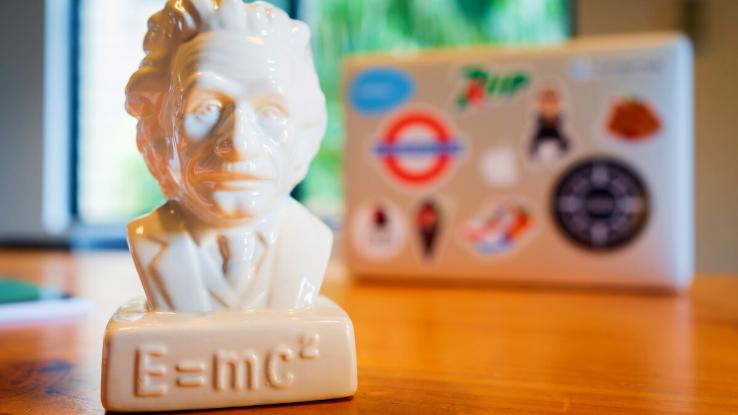What Is the Spacetime Continuum?

“Spacetime Continuum” might sound like a weighty term, but it’s not too difficult to understand if we break it down.
“Spacetime” is merely a way of viewing space and time as interwoven concepts – two parts of the same whole. Albert Einstein coined the term when he proposed the theory of relativity in the early 1900s. You can locate anything and anyone within spacetime using four coordinates; the three dimensions of space (width, breadth, and length) and time. Sounds complicated, right? Let’s apply this information to a practical scenario.
Let’s say you want to meet up with a friend. To do so, you’ll need to define a specific location and a specific time to rendezvous. Planning to “meet up tomorrow” isn’t enough – you’d need to specify when and where you wish to meet. So, you’d probably say something like this; “let’s meet up tomorrow at 10:00 AM at Johnson’s Park.” This simple request is an example of spacetime at play! You can’t occupy a certain space in our universe without also occupying a specific time – hence spacetime!
“Continuum” is a fancy word that refers to something that goes on forever and only experiences gradual changes along the way. Think of a gigantic map without any breaks, gaps, or blank spaces. This map accounts for everything and everyone in our universe across every point in time that it exists. What you’ve just envisioned is the “spacetime continuum” in a nutshell!
You exist within the spacetime continuum, alongside the stars in the sky, the planets in our solar system, and whichever device you’re using to read this article!

Who Proposed the Spacetime Continuum?
As we previously mentioned, Albert Einstein coined the term spacetime. He first introduced the concept in his 1905 paper “On the Electrodynamics of Moving Bodies”. The two big takeaways from this paper (#1 the laws of physics are consistent across all frames of reference without acceleration, and #2 the speed of light is constant in a vacuum for all observers) form the basis of Einstein’s Theory of Special Relativity.
You’ve likely encountered “E = mc2″– or “energy equals mass times the speed of light squared” – at some point in your life. This is the mass-energy equivalence formula, where “E” stands for “energy”, “m” represents “mass”, and “c2” symbolizes the “speed of light squared”. This formula simply means that objects gain more mass the faster they move. So if an object approached the speed of light, its mass would eventually become infinite – along with the energy required to move it any further!
How Does the Theory of General Relativity Come Into Play?
Einstein later proposed the Theory of General Relativity in 1916 to explain how gravity and mass affect the spacetime continuum. Imagine spacetime as a mattress and a planet as a bowling ball. If you place the bowling ball on top of the mattress, it will curve the fabric around itself. If you place a golf ball next to that bowling ball, it will fall into the dent caused by the larger object.
Huge objects do the same thing to spacetime. The larger an object is, the more it bends spacetime around itself, leading other nearby objects to move through space (and time) toward it. That’s gravity in a nutshell! Earth, for example, is so massive that it bends spacetime to keep us on its surface.
Is Time Travel Possible?
After centuries of intense study, the scientific community’s answer is still a resounding “maybe?” We’ll need to recap to explain why. Einstein discovered that the speed of light is constant regardless of how quickly other objects move. He also learned that nothing can move faster than light (without gaining infinite mass). So, consider this; two people moving at different speeds will see light travel at the exact same rate. This will actually cause these individuals to experience time differently, as impossible as that might sound.
You see, time will slow down when a fast-moving object is compared to another, not-so-fast-moving object. This unique phenomenon is called time dilation. Several major motion pictures (like X-Men: Days of Future Past and Interstellar) show time dilation in action! Moreover, if a person were to board a spaceship and travel at half the speed of light, they would age much slower than another person back on Earth!
Even lower speeds can create this effect. Scientists used special clocks to determine that a satellite orbiting the Earth gained 38 microseconds every day. The satellite passed through time just a bit slower than the scientists on Earth, which supports the idea that objects move through time and space relative to each other.
Many scientists agree that time dilation is the only feasible form of time travel. However, Einstein’s Theory of Relativity does include wormholes, or direct passages between separate points in spacetime. Faster than light travel might be impossible in the conventional sense, but a wormhole between two points in spacetime would let an object move from A to B instantaneously! Wormholes are currently an abstract idea, but scientists might figure out how to utilize them one day.
Where We Get Spacetime Wrong
There are a few things that Einstein’s Theory of Relativity and our current knowledge of the spacetime continuum can’t explain. At the atomic level, for instance, particles don’t always move the way they should according to relativity. Likewise, we don’t understand what happens to matter when it falls into a Black Hole – a region of space that has virtually infinite density. New ideas such as string theory attempt to make relativity work in these situations, while the concept of phase space suggests that entire the spacetime continuum might be relative!
Inquisitive minds helped us develop our current understanding of the spacetime continuum. We have faith that today’s misconceptions will pave the way for tomorrow’s answers. But don’t wait for another theoretical physicist to push the envelope. Keep learning about our universe and personally contribute to scientific discourse!





